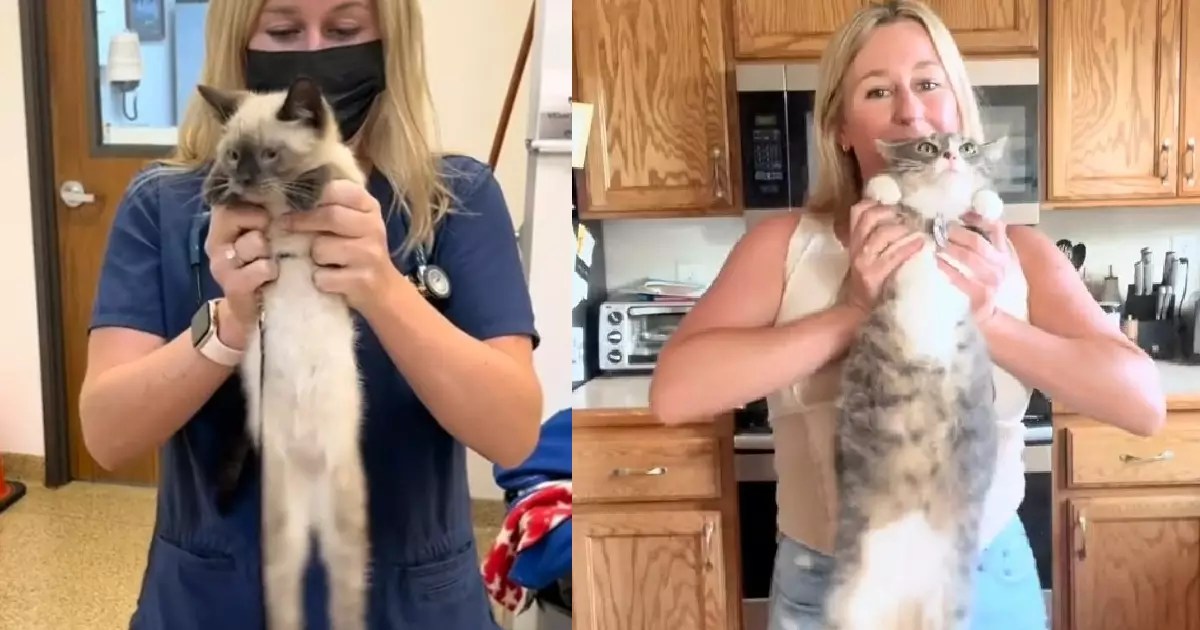In the age of social media, quirky experiments and old wives’ tales often find new life by captivating online audiences. Recently, a seemingly simple “dangle test” launched into viral fame on TikTok, captivating millions of viewers eager to decode their feline companions’ personalities through a straightforward gesture. This trend, originating from a Kansas veterinarian, combines humor with genuine curiosity, suggesting that a cat’s response to being gently dangled might reveal its temperament. While many pet owners approached it as an amusing challenge, its popularity prompts a deeper inquiry into whether age-old beliefs about animal behavior hold any scientific merit or are just playful myths.
The Origins and Evolution of the Dangle Test
The roots of this test trace back decades, shared anecdotally among veterinarians and pet owners as an informal method of assessing a kitten’s or puppy’s future demeanor. The premise is simple: lift the animal gently by its torso and observe its reaction. An accepted belief has been that animals which remain relaxed or calmly respond to this “dangle” will grow to be social, compliant pets, whereas those that struggle or show stress might develop more challenging behavior traits. A veterinarian from Kansas, Dr. Tori Given, brought this age-old concept into digital relevance, posting a lighthearted video that instantly resonated with pet lovers worldwide. Her cheerful presentation provided a humorous take that encouraged thousands to try the experiment themselves.
The Viral Surge and Its Psychological Impact
What makes this trend particularly fascinating isn’t just its viral reach but its reflection of human desire to understand and control pet personalities. TikTok reactions from viewers ranged from gleeful surprise at their cats’ laid-back responses to humorous confessions of failed tests—ranging from cats playing with their owner’s limbs to outright rejection of the experiment. This dynamic indicates that the test feeds into a broader cultural obsession with personality insights, craving predictability from our pets’ behaviors. For many, the results were a source of entertainment, but they also triggered reflections on the owner-pet relationship: what traits truly define a good cat? Can a simple response to an odd test predict trust, independence, or temperament? The answer seems to be a mixture of humor, hope, and skepticism.
Is There Scientific Validity Behind the “Dangle”?
Critically examining the test’s scientific foundation reveals that, while charming, it lacks robust validation. Animal behaviorists argue that responses to being gently dangled are influenced by various factors—current mood, prior socialization, health conditions—not necessarily a reliable indicator of long-term temperament. While some cats may appear nonchalant and thus seem “well-tempered,” this could be coincidental or simply a reflection of their socialization rather than innate personality. Conversely, a more reactive or stressed response might be due to temporary discomfort, not a future personality trait. Therefore, while the test is playful and offers photo-worthy moments, it shouldn’t replace comprehensive behavioral assessments or careful observation over time.
Personality Beyond the Test: Understanding Cats on a Deeper Level
Feline personalities are complex, influenced by genetics, environment, and individual experiences. Relying solely on a quick physical test oversimplifies this multifaceted nature. Experienced pet owners know that observing a cat’s interactions over days or weeks provides richer insights than a fleeting reaction. Traits like independence, playfulness, or anxiety are better assessed through consistent interactions, environmental reactions, and trust-building behaviors. That said, the viral “dangle test” can serve as a fun conversation starter, prompting owners to observe and reflect on their pets’ unique personalities. It also underscores the importance of understanding feline behavior beyond stereotypes—acknowledging that every cat possesses a distinct, nuanced character.
A Cultural Reflection and Responsible Pet Ownership
Ultimately, trends like this highlight a broader cultural narrative centered on understanding and bonding with our pets. While playful experiments can deepen human-animal connections, they shouldn’t substitute responsible pet care rooted in scientific understanding. Owners are encouraged to focus on comprehensive behavioral knowledge, socialization, and empathy rather than relying on quick tests. The “dangle test” may offer entertainment and some insights—but genuine relationships with pets flourish through patience, observation, and love. As we continue to explore such age-old beliefs in the digital age, it’s important to balance curiosity with responsible care, ensuring that our desire to decode our pets’ minds does not overshadow their well-being.
In the end, whether a cat calmly accepts being dangled or fiercely rejects it, every feline’s personality is a mosaic of traits that demand respect and understanding far beyond viral trends.

